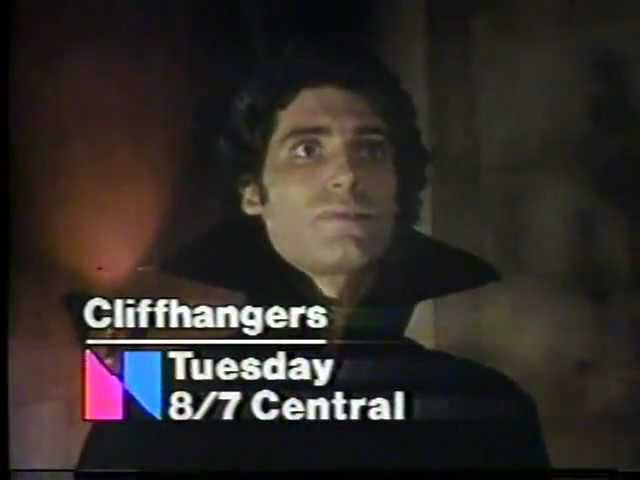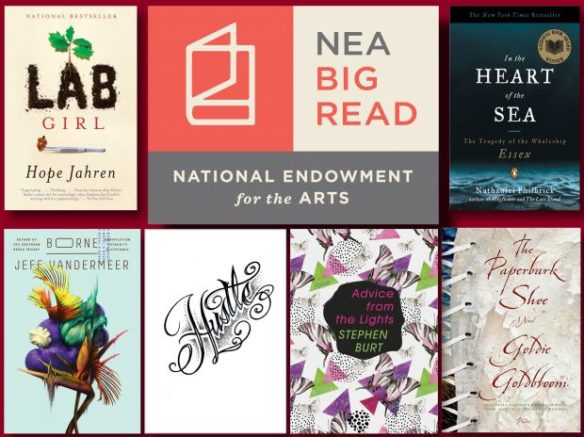(1) PASSING THE GRAIL. “Steven Spielberg Won’t Direct Indiana Jones 5” reports Vanity Fair.
“Indiana…let it go.”
This was what the adventurer’s father said to him in the climax of Indiana Jones and the Last Crusade, as he hung by one hand from a cliff and reached with the other toward the Holy Grail. Ultimately, the words hit home. As much as he wanted one more treasure, he had gone far enough.
That’s apparently the conclusion Steven Spielberg just reached. The Oscar winner has decided not to direct a planned fifth movie about Harrison Ford’s punch-throwing archaeologist, multiple sources confirmed to Vanity Fair. Instead, James Mangold, director of Ford v Ferrari, Wolverine, and Logan, is in talks to take over the project, which is still set to hit theaters on July 9, 2021.
A source close to Spielberg told Vanity Fair, “The decision to hand over directing duties was entirely Steven’s,” adding that “he felt now was the perfect time to let a new director and a new generation give their perspective to the overall story and this film.”
(2) EGYPT ACROSS THE AGES. Juliette Wade hosts “K. Tempest Bradford” at Dive Into Worldbuilding. Read the synopsis, watch the video, or do both!
…She’s been researching Egypt for a long time. She told us about how she’s been attempting to write a novel set in Egypt since college. In fact, it’s a grouping of projects, not one (as is appropriate with a long and thorough research project of this nature!).
She started with a novel based on the life of Pharaoh Akhenaten with links to Oedipus, and then decided she didn’t have the skills to do it well and put it on the back burner. At that point she started learning a lot about the 18th dynasty. People know a lot about that period, she points out, and she has become very knowledgeable about it. Then she started writing a Steampunk story set in ancient Egypt, pushing boundaries. It started out as a short story and turned into a novel. That, she says, has been common for projects she’s worked on since Clarion West. That piece is set at the start of the beginning of the 18th dynasty….
Tempest says she’s thought about carrying forward the steampunk cultural elements into her other novel. Giant flying scarab beetles run by the heat of the sun for Akhenaten to ride in sounded pretty awesome to us!
(3) FOWL PLAY. In the February 1 Irish Times, Niamh Donnelly interviews Eoin Colfer about his new fantasy Highwire, as Colfer discusses the forthcoming Artemis Fowl movie, how he hopes to slow down after 43 books, and the graphic novels he writes that deal with contemporary political issues: “Eoin Colfer: ‘Humour defines me … I’m obsessed with it’”.
… “As a teacher I always found that telling stories was the best way to teach because you could sneak the information inside an adventure story. So, a lot of the Artemis books, for example, would have a very ecological message. My books tend to be, of late, a mixture of escapism and trying to tackle issues head on. Last year we did the graphic novel, Illegal, which was, just blatantly, a book about how tough it is to migrate from Africa to Europe. But because it was a graphic novel, we got to people who wouldn’t normally get that subject. And we also brought a lot of people who do like that subject into the world of graphic novels. And then the flip side of that is I like to do books like Highfire and Fowl Twins just so people can have a laugh and kids can go to bed smiling.”
(4) ATTENTION STATION ELEVEN FANS. Penguin Random House talks ghost stories and more in a Q&A with Emily St. John Mandel:
Q: Was there a particular event or idea that was the genesis for The Glass Hotel?
A: My original idea was that I wanted to write a ghost story that was also somehow about money. (In fact, one of my early working titles was Ghosts and Money, because titles are hard.) But the event that captured my imagination was the collapse of the Madoff Ponzi scheme. The characters in the novel are entirely fictional, but the central crime is essentially Madoff’s.
Q: Station Eleven fans will find some small nods to that beloved novel here. While this novel is different in so many ways how do you see it in relation to Station Eleven? It seems like they are both in many ways about art?
A: Yes, I think that’s fair to say. I also think it’s fair to say that if The Glass Hotel is a departure from Station Eleven, it’s in many ways a return to the themes that preoccupied me in my earlier work. My first three novels—Last Night in Montreal, The Singer’s Gun, and The Lola Quartet—were largely concerned with bad decisions, the question of how to live honourably in a damaged world, memory, and questionable morality.
(5) AVOID THE TRAP. [Item by Martin Morse Wooster.] This anecdote about Bradbury and Matheson is from “The Genre of You” by Jonathan Maberry behind a paywall in the March Writer’s Digest
‘What kind of writer do you want to be?’
That question was asked of me when I was 13. I’d been dragged along to a party at a penthouse in New York City. It was 1971 and the person asking the question was the legendary writer Richard Matheson…
…Before I could answer, another of the writers at the party — national treasure Ray Bradbury –touched my shoulder and said, ‘Be careful, young man. That question’s a trap.”…
…So, what was the trap? I found out when I did not step into it. ‘I don’t know,’ I said. ‘A lot of things, I guess.’
Matheson beamed a great smile. ‘Good answer!’ he said, then explained why. ‘A genre is something that matters to the people in marketing. It doesn’t matter much to me. It doesn’t matter to Ray. We write what we want to write and then figure out how to sell it.”
Bradbury agreed. ‘I like science fiction and fantasy, but if an idea for mystery comes and whispers loud enough to my ear, I’ll have to listen.’
The rest of the article includes anecdotes from Matheson, Harlan Ellison, and Joe R. Lansdale. Here’s one more Bradbury quote:
“Don’t just write what you want to read — everyone does that. Write the story you would go out of your way to hunt down and read.'”
(6) MICHAEL HERTZ OBIT. [Item by Daniel Dern.] Michael Hertz, creator of definitive New York City subway map, RIP. Among other things, he found a way to redo the map so it could be done as one rather than 5. Paywalled NYT obit. Non-paywalled Chicago Tribune pickup of NYT article: “He designed one of the most consulted images in modern history: Creator of the NYC subway map dies at 87”
“It was the 1970s,” Arline L. Bronzaft, a psychologist who worked on Hertz’s replacement map, told Newsday in 2004. “People were fearful of going on the subways. We wanted people to use the map to see the sights of New York.”
The map that Hertz’s firm came up with included streets, neighborhoods and other surface reference points. And it depicted the city and its signature elements like Central Park and the waterways in a fashion more reflective of reality — the park wasn’t square, as on the earlier map, and the water wasn’t beige.
It feels like I recently read an article on the evolution of subway maps, as the systems’ complexity grew… but I can’t find or remember it. Ah well.
(Somewhere I still have a few NYT subway tokens of various sizes (= different values over the years). Pretty sure at least one was for a 10cent fare.)
Transit-map-wise, I did buy these two books a year or three ago (but haven’t really looked through them yet): Transit Maps of the World: Expanded and Updated Edition of the World’s First Collection of Every Urban Train Map on Earth
Or, for the train-specific: Railway Maps of the World.
For the sfnal connection, I’ve got a list of transit maps for Middle Earth that I put together a year and a half ago (if the Fellowship had had ’em, those books and movies could have been shorter, methinks), but apparently didn’t offer to OGH… I’ll recheck and update it and send it in.
Meanwhile, there’s the Westeros Metro System map.

(7) TODAY IN HISTORY.
- February 27, 1979 — The Curse of Dracula premiered on NBC. Michael Nouri was Count Dracula, who is living undercover as a college teacher in 1979 San Francisco. It was part of Cliffhangers which attempted to resurrect the genre of film serials. Each hour-long episode was divided into three 20-minute (including commercials) stories featuring different storylines Including this one. The Secret Empire was another genre serial done as part of this show. You can see the first episode of The Curse of Dracula here. Cliffhangers lasted but a single season from the 27th of February to 1st of May 1979.

(8) TODAY’S BIRTHDAYS.
[Compiled by Cat Eldridge.]
- Born February 27, 1902 — John Steinbeck. Yes, John Steinbeck. ISFDB lists one novel, The Short Reign of Pippin IV: A Fabrication, Plus a bevy of short fiction such as “The Wedding of King”, “The Affair at 7 Rue de M—“ and “The Death of Merlin”. I’ll admit that i didn’t know these existed. So, has anyone read these? (Died 1968.)
- Born February 27, 1915 — Donald Curtis. His first genre role was an uncredited one as Ronal in the first twelve chapters of the Forties Flash Gordon Conquers The Universe. He’s a German sentry in Invisible Agent, an WW II propaganda film, and Dr. John Carter in It Came from Beneath the Sea, a Fifties SF film. Likewise he’s in another Fifties SF film, Earth vs. the Flying Saucers, as Major Huglin. He played five different characters during on Science Fiction Theater, and he’d later have a one-offs on The Girl from U.N.C.L.E. and Get Smart!. (Died 1997.)
- Born February 27, 1927 — Lynn Cartwright. She had a career in genre productions starting with two Fifties pulp films, Queen of Outer Space and Wasp Women. She next shows up in The Erotic Adventures of Robin Hood, his Lusty Men and Bawdy Wenches. She has an appearance in the Far Out Space Nuts series, and earlier showed up on Science Fiction Theater. The Lucifer Complex is her SF role. (Died 2004.)
- Born February 27, 1934 — Van Williams. He was the Green Hornet (with the late Bruce Lee as his partner Kato) on The Green Hornet and three Batman cross-over episodes. He would voice President Lyndon B. Johnson on the Batman series, show up in an episode of Mission Impossible, and also do a one-off Quinn Martin’s Tales of the Unexpected and that’s it. (Died 2016.)
- Born February 27, 1938 — T.A. Waters. A professional magician and magic author. He appears not terribly well-disguised as Sir Thomas Leseaux, an expert on theoretical magic as a character in Randall Garrett’s Lord Darcy fantasy series and in Michael Kurland’s The Unicorn Girl in which he appears as Tom Waters. He himself wrote The Probability Pad which is a sequel to The Unicorn Girl. Together with Chester Anderson’s earlier The Butterfly Kid , they make up Greenwich Village trilogy. (Died 1998.)
- Born February 27, 1944 — Ken Grimwood. Another writer who died way too young, damn it. Writer of several impressive genre novels including Breakthrough and Replay which I’ve encountered and Into the Deep and Elise which are listed in ISFDB but which I’m not familiar with. So, what else is worth reading by him? (Died 2003.)
- Born February 27, 1960 — Jeff Smith, 60. Creator and illustrator of the most awesome Bone, the now complete series that he readily admits that “a notable influence being Walt Kelly’s Pogo”. Smith also worked for DC on a Captain Marvel series titled Mister Mind and the Monster Society of Evil.
- Born February 27, 1964 — John Pyper-Ferguson, 56. I certainly remember him best as the villain Peter Hutter on The Adventures of Brisco County, Jr. but I see that he got he got his start in Canadian horror films such as Hello Mary Lou: Prom Night II and Pin: A Plastic Nightmare. His first major SF role was in Space Marines as Col. Fraser. And though he has an extensive one-off career in genre series, his occurrence as a repeated cast member is not uncommon, ie he’s Agent Bernard Fainon the new Night Stalker for the episodes, shows up as Tomas Vergis on Caprica for six episodes and I see he’s had a recurring role on The Last Ship as Tex Nolan.
- Born February 27, 1970 — Michael A. Burstein, 50. He won the Astounding Award for Best New Writer in 1997 for “TeleAbsence”. His “Sanctuary” novella was chosen by Analog readers as the best novella published by the magazine in 2005. He has one to date, Remember the Future: The Award-Nominated Stories of Michael A. Burstein, which is available fir the usual digital publishers.
- Born February 27, 1976 — Nikki Amuka-Bird, 44. The Voice of Testimony in the Twelfth and Thirteenth Doctor story, “Twice Upon A Time”. She’s shown up quite a bit in genre work from horror (The Omen), space opera (Jupiter Ascending), takes on folk tales (Sinbad and Robin Hood) and evening SF comedy (Avenue 5).
(9) NEBULA PLATTER. Nerds of a Feather’s Adri Joy and Joe Sherry hit the highlights of the Nebula ballot in “Adri and Joe Talk About Books: The 2019 Nebula Awards”.
…Joe: I’d love to see a Nebula Longlist where we can see the even just the three or four books that just missed the ballot because here’s where things get interesting for me – I’m surprised that neither The City in the Middle of the Night nor The Light Brigade made the ballot. There’s no telling how, exactly, the Nebulas will translate to the Hugo Awards except that I think we both agree that A Song for a New Day feels more like a Nebula Book than a Hugo Book for whatever that means and whatever that’s worth.
Adri: I agree. Because the Nebulas don’t release voting statistics, they can feel like a closed box in this regard, albeit one that we collectively put our trust in to be delivering a result accurate to the voting base (and, hey, no 20booksto50k shenanigans this year!). Anders, Hurley and also The Future of Another Timeline feel like books that must have been bubbling just under. I wonder, also, about books like Black Leopard, Red Wolf, and some of the other literary “crossover” titles we were looking at on the Locus list. Are those also in the hidden longlist, or is that not what SFWA voters were looking at when putting this together?
(10) SOME LIKE IT SHORT. Then, Adri Joy reviews five sources of short sff – including collections and magazines – as part of “Questing in Shorts: February 2020” at Nerds of a Feather.
Of Wars, and Memories, and Starlight by Aliette de Bodard (Subterranean Press)
Aliette de Bodard’s Subterranean press collection is as beautiful as you’d expect on the outside, with a Maurizio Manzieri cover and the standard level of Subterranean finishing. It’s also an excellent collection that’s largely comprised of pieces from the Best Series-nominated Xuya universe, which ranges from alternate history Earth stories in which the Western part of North America is colonised by China, and the Aztec empire of Mexica survives into the present day in a loose alliance with the power now called Xuya. The collection contains one piece from this Earthbound continuity “The Jaguar House, in Shadow“, an intriguing political thriller which, along with the opening story “The Shipmaker“, sets up the rest of the intergalactic political, cultural and technological traits of the Xuya universe very nicely. De Bodard’s stories dealing with cultural clashes of some kind are highlights for me: from “The Waiting Stars“, the tale of a young Dai Viet woman who has been taken from her family and raised in the Galactic Empire, to “Scattered Along the River of Heaven“, a story of conflict and war and cultural revolution told two generations after the fact, de Bodard is quietly unflinching in her portrayals of displaced characters and their struggles to find connection with the different cultures they are surrounded by and yet, to some extent, alienated from. The absolute highlight on this front is “Immersion“, a Nebula and Locus winning short story which alternates between Quy and another woman from the Rong people, both of whom wear Galactic (western culture)-made “Immersers” which allow them to communicate with Galactics but at the expense of their own culture and personhood. For Quy, who wears the Immerser briefly to help her family with business transactions, the experience is unpleasant but temporary; for the other narrator, it has become her permanent reality. The story’s sense of isolation, and the various losses which the casual dominance of Galactic culture in this part of space has created, come around into a perfect, heartbreaking, circle by the end as the second narrator finds tentative connection in her isolating, but unique, understanding of both Rong and Galactic culture….
(11) RETURNING TO THE GALACTOSCOPE. And there’s so much sff coming out in 1965 that Galactic Journey ran a second batch of reviews:
(12) DOES IT LIVE UP TO THE HEADLINE? Mike Kennedy passed along this 2016 link because he loves the title: “All 35 Video-Game Movies, Ranked From Least Bad to Absolute Worst”. If you want to save yourself the suspense, here’s the film at the bottom of the barrel —
1. Postal (2007)
Here it is, a movie that should make you think Warcraft is high art. Postal opens on two terrorists in the cockpit of a plane, fighting about how many virgins greet martyrs when they enter heaven. The argument ends with them deciding to fly to the Bahamas instead, but then the passengers of their hijacked plane revolt and force it to crash into the World Trade Center. Everything hovers around that level of bad and offensive for the rest of the movie, making this an easy call for definitively worst video-game adaptation ever. Uwe Boll, you make it so hard to love you.
(13) FILL ‘ER UP. BBC reports: “Docking gives Intelsat telecoms satellite new lease of life”.
Two American satellites have docked high over the Atlantic in a demonstration of what many commentators expect to be a burgeoning new industry.
One of the platforms is an old telecoms spacecraft low on fuel; the other is an auxiliary unit that will now take over all the former’s manoeuvring functions.
This will allow Intelsat-901 to extend its 19-year mission of relaying TV and other services by another five years.
The event has been described as a major accomplishment by the firms involved.
Northrop Grumman, which produced the Mission Extension Vehicle-1 that grabbed hold of Intelsat-901, said it was the first time two commercial satellites had come together in this way at an altitude of just over 36,000km.
…Northrop Grumman’s vehicle will now control all movement for the pair, including the precise pointing required by IS-901 to map its telecommunication beams on to the right regions of Earth’s surface.
When the Intelsat’s extended mission comes to an end, the MEV-1 will take the telecoms platform to a “graveyard” orbit before then joining up with another “running on empty” customer that needs the same manoeuvring assistance.
Northrop Grumman, which is operating its new servicing business through a subsidiary, SpaceLogistics LLC, said it planned to expand the basic “tug” concept offered by MEV-1 to include vehicles capable of in-orbit repair and assembly.
Already it is working on systems that would feature not just simple docking probes but robotic arms to grab hold of satellites. Another option being developed is fuel pods that can be attached to satellites running low on fuel.
(14) BITTEN TO DEATH BY DUCKS. Daffy and Donald, lunch is served: “China prepares 100,000 ducks to battle Pakistan’s locust swarms”.
China is preparing to deploy 100,000 ducks to neighbouring Pakistan to help tackle swarms of crop-eating locusts.
Chinese agricultural experts say a single duck can eat more than 200 locusts a day and be more effective than pesticides.
Pakistan declared an emergency earlier this month saying locust numbers were the worst in more than two decades.
Millions of the insects have also been devastating crops in parts of East Africa.
The Chinese government announced this week it was sending a team of experts to Pakistan to develop “targeted programmes” against the locusts.
Lu Lizhi, a senior researcher with the Zhejiang Academy of Agricultural Sciences, described the ducks as “biological weapons”. He said that while chickens could eat about 70 locusts in one day a duck could devour more than three times that number.
“Ducks like to stay in a group so they are easier to manage than chickens,” he told Chinese media.
(15) NICKELODIOUS. The New York Times takes you “Down on the Farm That Harvests Metal From Plants”.
Some of Earth’s plants have fallen in love with metal. With roots that act practically like magnets, these organisms — about 700 are known — flourish in metal-rich soils that make hundreds of thousands of other plant species flee or die.
Slicing open one of these trees or running the leaves of its bush cousin through a peanut press produces a sap that oozes a neon blue-green. This “juice” is actually one-quarter nickel, far more concentrated than the ore feeding the world’s nickel smelters.
The plants not only collect the soil’s minerals into their bodies but seem to hoard them to “ridiculous” levels, said Alan Baker, a visiting botany professor at the University of Melbourne who has researched the relationship between plants and their soils since the 1970s. This vegetation could be the world’s most efficient, solar-powered mineral smelters. What if, as a partial substitute to traditional, energy-intensive and environmentally costly mining and smelting, the world harvested nickel plants?
(16) PULLING THE WOOL OVER. “This Lady Crochets Her Neighbors and It Is Incredible” – Awkward has a photo gallery.
Aritst Liisa Hietanen is one talented lady. Like, incredibly talented. Hietanen takes crocheting to a whole new level when she creates life-like models of her friends and neighbors in her native Finland.

[Thanks to JJ, Cat Eldridge, Chip Hitchcock, Mike Kennedy, Martin Morse Wooster, Michael Toman, John King Tarpinian, and Andrew Porter for some of these stories. Title credit goes to File 770 contributing editor of the day Jenora Feuer.]


